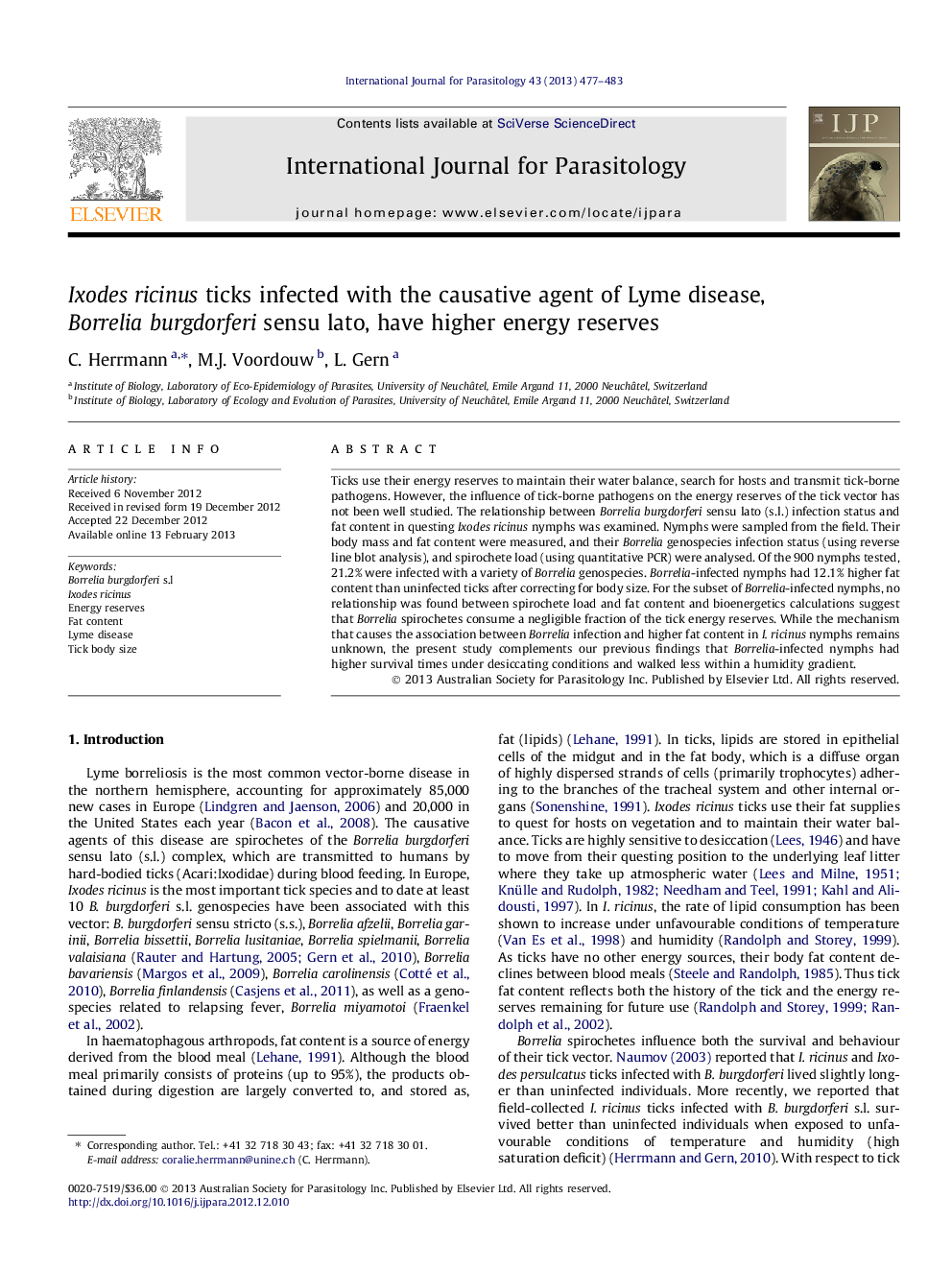| کد مقاله | کد نشریه | سال انتشار | مقاله انگلیسی | نسخه تمام متن |
|---|---|---|---|---|
| 2436161 | 1107280 | 2013 | 7 صفحه PDF | دانلود رایگان |

Ticks use their energy reserves to maintain their water balance, search for hosts and transmit tick-borne pathogens. However, the influence of tick-borne pathogens on the energy reserves of the tick vector has not been well studied. The relationship between Borrelia burgdorferi sensu lato (s.l.) infection status and fat content in questing Ixodes ricinus nymphs was examined. Nymphs were sampled from the field. Their body mass and fat content were measured, and their Borrelia genospecies infection status (using reverse line blot analysis), and spirochete load (using quantitative PCR) were analysed. Of the 900 nymphs tested, 21.2% were infected with a variety of Borrelia genospecies. Borrelia-infected nymphs had 12.1% higher fat content than uninfected ticks after correcting for body size. For the subset of Borrelia-infected nymphs, no relationship was found between spirochete load and fat content and bioenergetics calculations suggest that Borrelia spirochetes consume a negligible fraction of the tick energy reserves. While the mechanism that causes the association between Borrelia infection and higher fat content in I. ricinus nymphs remains unknown, the present study complements our previous findings that Borrelia-infected nymphs had higher survival times under desiccating conditions and walked less within a humidity gradient.
Figure optionsDownload high-quality image (145 K)Download as PowerPoint slideHighlights
► Fat content in field-collected Ixodes ricinus nymphal ticks was measured.
► Borrelia burgdorferi s.l. spirochete load in the same ticks was quantified.
► Infected ticks had higher fat reserves after correcting for body size.
► Spirochete load had no influence on tick fat reserves.
► Fat reserves are critical for tick questing behaviour and disease transmission.
Journal: International Journal for Parasitology - Volume 43, Issue 6, May 2013, Pages 477–483